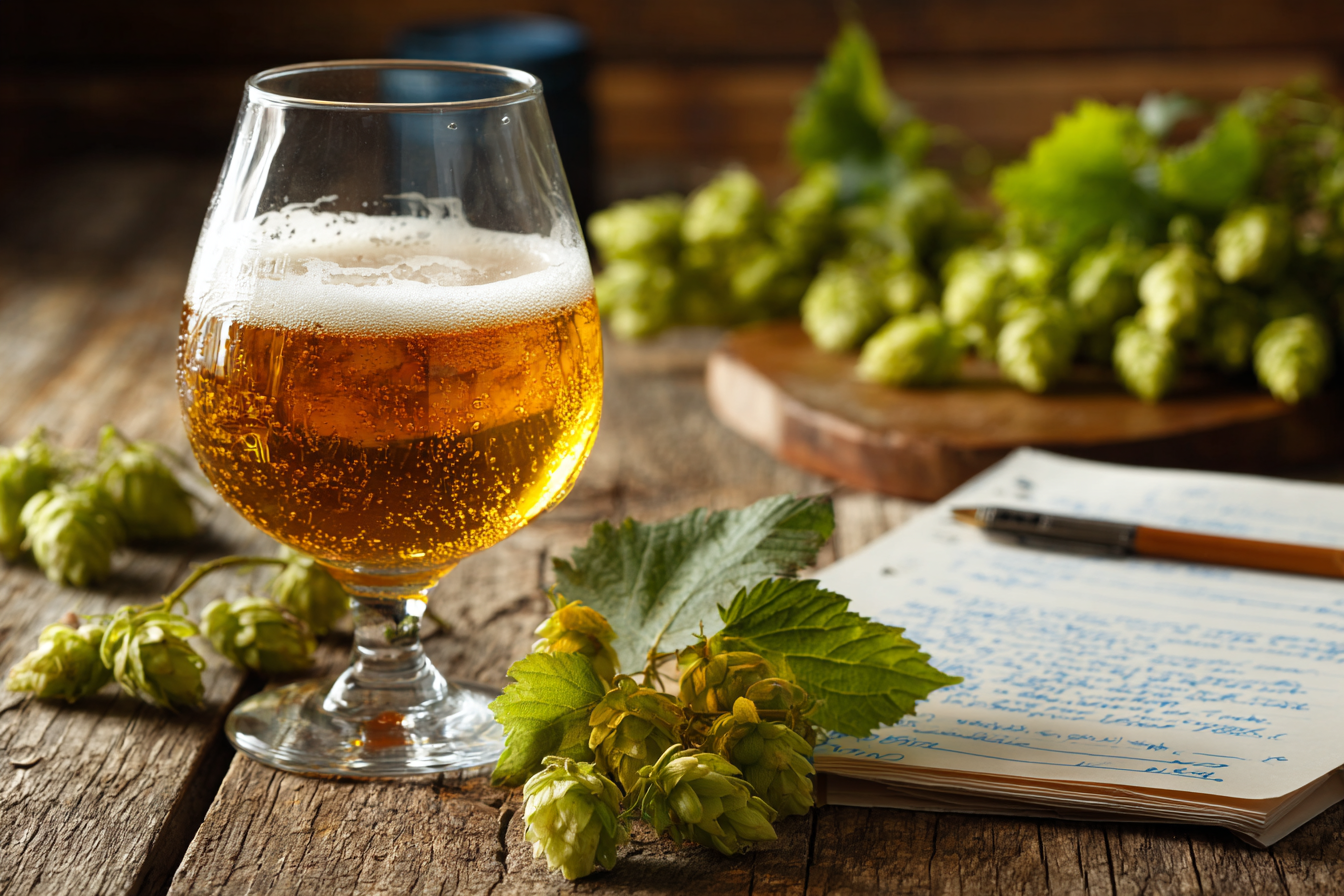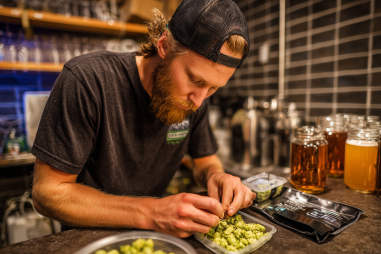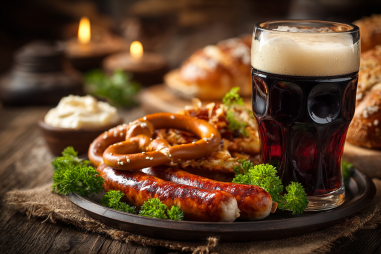If you’re delving into the world of craft beer, you’ve likely encountered the intriguing mention of “Brett beer” or “Brettanomyces beer.” Known for its unique and often surprising flavor character, Brett beer stands apart from many traditional beer styles. Its flavor profile is complex, funky, and layered with fruity and earthy undertones that can challenge and delight the palate. Whether you’re a seasoned beer enthusiast or just beginning your exploration of craft brews, understanding what makes Brett beer special will enrich your tasting experience and appreciation.
What is the Brett Beer Flavor Profile?
Brett beer owes its distinctive taste to the wild yeast Brettanomyces, affectionately known as “Brett.” Unlike the more commonly used Saccharomyces yeast strains in brewing, Brettanomyces produces a wide range of unique flavors and aromas that can vary from funky and barnyard-like to fruity and crisp. The resulting flavor profile is rarely straightforward, often featuring layers of complexity that develop and evolve with time. This wild yeast imparts a signature character that can be tart, spicy, or even slightly sour, making Brett beer an exciting, dynamic choice for adventurous drinkers.
The Role of Brettanomyces Yeast in Shaping Flavor
The Brettanomyces yeast is the heart and soul of Brett beer’s flavor profile. Unlike standard brewing yeast, Brettanomyces ferments at a slower rate and is capable of breaking down sugars that traditional yeasts cannot. This leads to unique metabolic byproducts responsible for the beer’s earthy, funky, and sometimes “barnyard” aroma and taste. These wild yeasts create compounds such as phenols and esters, which largely contribute to the distinctive flavors.
Additionally, Brett yeast can introduce varying levels of acidity, ranging from a gentle tartness to a sharp sourness, depending on the beer’s brewing process and aging conditions. Many brewers intentionally use Brettanomyces to produce beers with a complex flavor spectrum that feels alive and continuously changing, especially during extended barrel aging.
Common Flavor Notes: Funk, Spice, Fruit, Earth
The flavor of Brett beer often defies simple description because it covers several sensory territories. The major tasting notes most commonly associated with Brett beer include:
- Funk: This is probably the most iconic trait, often described as barnyard, horse blanket, or barnyard funk. It can evoke an earthy, somewhat wild aroma that some find challenging but many aficionados love.
- Spice: Phenolic compounds can produce spicy nuances reminiscent of cloves, black pepper, or even a mild smokiness.
- Fruit: Depending on the beer and fermentation conditions, fruity esters emerge, ranging from tropical fruits like pineapple and mango to more tart citrus flavors such as grapefruit and lemon zest.
- Earth: Earthy tones add depth, often reminiscent of wet forest floor, leather, or subtle mushroom-like hints.
Many Brett beers balance these elements so that each sip reveals new undertones, making each tasting session an adventure. The interplay between funkiness, fruitiness, and earthiness can vary significantly from one beer to another.
How Aging Affects Flavor Development
Aging is a critical aspect of Brett beers that often makes them evolve dramatically from the moment they are bottled. Brettanomyces yeast continues to work slowly during barrel aging or storage, refining the beer’s flavor and complexity over time.
As Brett ages, the funk and earthiness can deepen, sometimes mellowing into more nuanced and rounded characters. The fruitiness might fade slightly but often becomes more integrated with the other flavors, creating a harmonious balance. Additionally, the level of sourness or tartness can increase with aging, adding another layer of sensory interest.
Extended aging in wooden barrels (such as oak) adds another dimension by imparting wood-derived flavors like vanilla, tannins, or smokiness, complementing the Brett’s natural profile. The oxygen exposure from barrel aging also influences flavor development, sometimes softening harsh notes and creating more complexity.
Comparing Brett Beer Styles by Flavor Nuances
Brett yeast is used across a variety of beer styles, each showcasing different aspects of its potential:
- Brett IPA or Pale Ale: These beers combine hop bitterness and aroma with Brett’s funk and fruitiness, offering a unique hybrid that is both aromatic and wild.
- Sour and Wild Ales: Brett is often a core component in sour beers, producing tartness along with earthy and funky flavors that highlight Brett’s microbiological complexity.
- Belgian-Style Beers: Many Belgian saisons and farmhouse ales use Brett yeast to craft spicy, fruity profiles with distinct tartness and funk.
- Barrel-Aged Brett Beers: These often represent the pinnacle of Brett’s expressive potential, with layers of woody, funky, fruity, and sour notes that evolve over months or years.
While the defining traits remain, stylistic variations emphasize certain Brett characteristics over others, offering a wide playground for brewers and drinkers alike.
Food Pairings That Complement Brett Beer
Brett beers, with their bold and complex flavors, pair wonderfully with a variety of foods. The funk, acidity, and fruitiness can either contrast or complement dishes, enhancing the overall dining experience. Consider pairing Brett beer with:
- Cheeses: Strong, aged cheeses like goat cheese, blue cheese, or sharp cheddar amplify flavor contrasts.
- Charcuterie: Salty cured meats, pâtés, and sausages pierce through Brett’s funk and acidity beautifully.
- Grilled or Roasted Meats: The smoky char and savory profile of grilled dishes align well with the rustic notes in Brett beer.
- Spicy Food: Brett’s funk and spice balance nicely with spicy cuisines such as Cajun, Mexican, or Indian dishes.
- Fruity Desserts: Fruit-forward Brett beers can pair with desserts that feature berries, citrus, or tropical fruits, highlighting the beer’s ester profiles.
Tips for Tasting and Appreciating Brett Beer
Savoring Brett beer takes a slightly different approach than more straightforward beer styles. Here are some tips to help you truly appreciate its intricate flavors:
- Use the Right Glassware: Opt for tulip-shaped or snifter glasses that concentrate aroma and allow you to fully experience the beer’s nose.
- Take Your Time: Brett flavor notes often develop over time once the beer is poured. Sip slowly and see how flavors evolve in your mouth.
- Embrace the Funk: Don’t shy away from the barnyard or farmy elements. These funky aromas are part of what makes Brett beer special.
- Compare Different Brett Beers: Try a few different styles or brews to understand the range of what Brett yeast can produce.
- Note the Context: Temperature and food pairing can bring out or mute certain aspects of the beer’s profile, so experiment with different conditions.
Approaching Brett beer with curiosity and an open mind can transform your experience from simply drinking beer to truly appreciating a living, breathing work of art.
Enjoying the Complexity of Brett Beer
Brett beer is a fascinating journey into wild yeast fermentation, offering a distinct and adventurous flavor profile full of funk, spice, fruit, and earth. Its complexity grows with aging and varies widely depending on brewing style, making it a favorite for those seeking something out of the ordinary in the craft beer world. By understanding the role of Brettanomyces yeast, recognizing common tasting notes, and pairing the beer thoughtfully with food, you can unlock new dimensions of flavor and enjoyment. Whether you prefer a bright, fruity Brett ale or a deep, barrel-aged wild beer, Brett beer invites you to savor the wild side of brewing craftsmanship.







